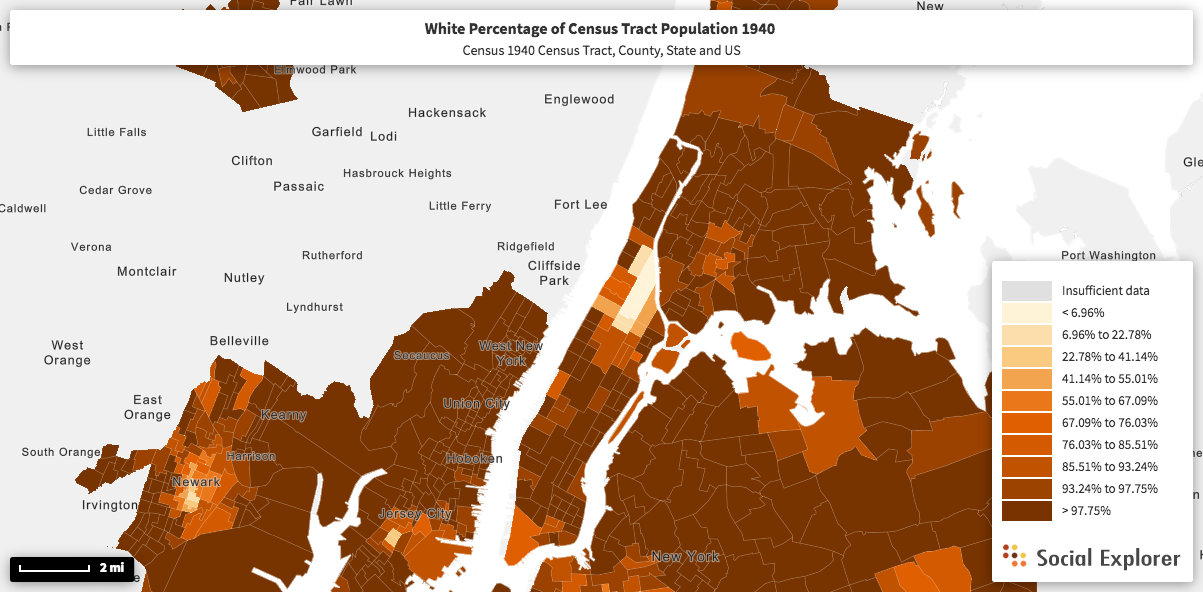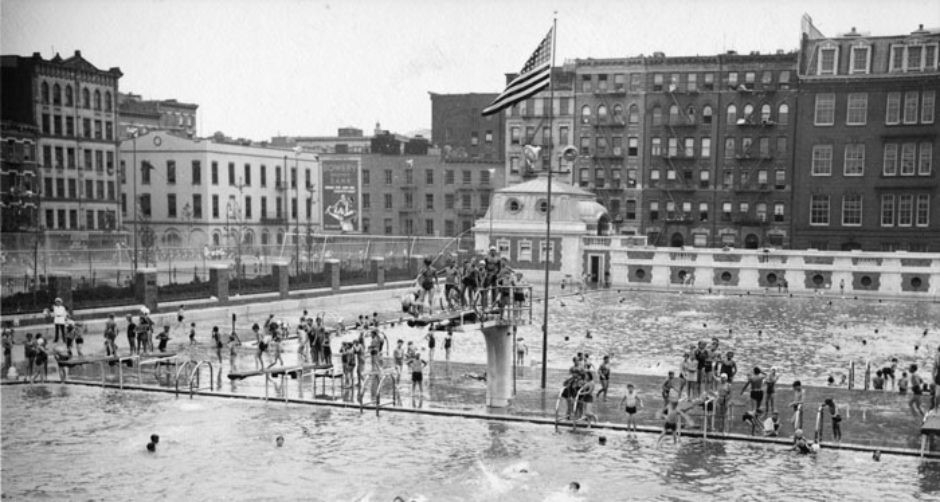The geographies of the lives of the children who used the bath houses and pools impacted their lived experience and their childhood. Their experiences were heavily influenced by their gender, race, and class background. The geographies of these identities are an important part of the story.
A geographical history of the free public baths and pools of Manhattan can be found on this StoryMapJS. Select the Start Exploring button to begin the tour. Each slide on the Story Map represents a free public bath or pool. Most, but not all (such as the Milbank Memorial bath, which was funded privately), were municipally funded. The facilities covered by the map were all built between 1901 and 1936, though some had additions made to the facilities in the 1940s under the Works Projects Administration. There were other bathing facilities (as can be seen on the map of Figure 2) however those facilities were either located in a municipal park, or there was a fee for bathhouse services. I have focused solely on free, public baths because more those are the ones for which the best records have been kept.
The following to maps of racial demographics based on Census data in Manhattan (one from 1910 and the other from 1940) show the change in demographics over time. The map of 1940 data is especially useful when cross referenced with the StoryMap to see the racial demographics of the part of the city in which bath houses and pools were located.


The following chart visualizes the demographics of each neighborhood in which a public bath house was located in Manhattan, this information can also be found on the StoryMap, but can be better conceptualized in this format:

Figure 1: (Williams 1991, pg. 61)
The following chart details the cost of each of the public free municipal bath houses constructed before 1915. It is easy to see why the city would be so invested in attracting people to use the bath houses-they cost a lot of money to build. Those who proposed and pushed for the baths thought it would only be worth the cost if the poor would actually use the facilities. If children were needed to make the progressive ideas of cleaning and controlling the lower classes a reality, then so be it.

Figure 2. (Williams 1991, pg. 57)
